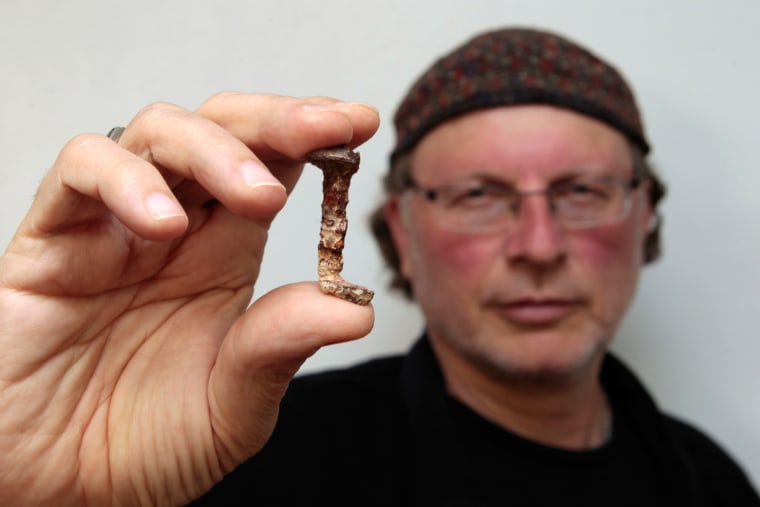Could two of the nails used to crucify Jesus have been discovered in a 2,000-year-old tomb in Jerusalem? And could they have mysteriously disappeared for 20 years, only to turn up by chance in a Tel Aviv laboratory?
That's the premise of a new documentary film that has drawn sharp criticism from biblical experts even before its release.
"The Nails of the Cross" is the latest film by investigator Simcha Jacobovici, who sparked a similar debate three years ago over claims that the "lost tomb of Jesus" had been found. In the new film, Jacobovici presents a case that is partly based on empirical data, and partly based on leaps of faith.
He hails the find as historic, but most experts and scholars contacted by Reuters dismissed his case as far-fetched, with some calling it a publicity stunt.
Many ancient artifacts, including other nails supposedly traced back to the crucifixion, have been presented over the centuries as having a connection to Jesus. Most have been deemed phony, while some were embraced as relics.
Jacobovici says this find differs from others because of its historical and archaeological context.
"What we are bringing to the world is the best archaeological argument ever made that two of the nails from the crucifixion of Jesus have been found," he said in an interview, wearing his trademark traditional knitted cap. "Do I know 100 percent yes, these are them? I don't."
Film focuses on grave
The film begins by revisiting an ancient Jerusalem grave discovered in 1990 which was hailed by many at the time as the burial place of the Jewish high priest Caiaphas, who in the New Testament presides over the trial of Jesus. The grave was uncovered along with a number of ossuaries, or bone boxes, during construction work on a hillside a few miles south of the Old City. It has since been resealed.
Caiaphas is a major figure in the Gospels, having sent Jesus to the Romans and on to his death, and one of Jacobovici's assertions is that the high priest was not such a bad guy.
The film asserts that two iron nails were found in the tomb, one on the ground and one inside an ossuary, but mysteriously disappeared shortly after. Jacobovici says he tracked them down to a laboratory in Tel Aviv of an anthropologist who is an expert on ancient bones.
If they are indeed the same nails — eaten away by rust and bent at the end, almost purposefully — was their disappearance a conspiracy or a logistical slip-up? No definite answer is offered.
Used in crucifixion?
Either way, Jacobovici argues that the nails could have been used in a crucifixion, which was a common practice 2,000 years ago. He then offers his theory about why they may have been used in the most famous crucifixion in history.
"If you look at the whole story, historical, textual, archaeological, they all seem to point at these two nails being involved in a crucifixion," he said. "And since Caiaphas is only associated with Jesus' crucifixion, you put two and two together and they seem to imply that these are the nails."
The Israel Antiquities Authority, which oversaw the Jerusalem excavation, said in reaction to the film's release that it had never been proven beyond doubt that the tomb was the burial place of Caiaphas. It also said that nails are commonly found in tombs.
"There is no doubt that the talented director Simcha Jacobovici created an interesting film with a real archaeological find at its center, but the interpretation presented in it has no basis in archaeological findings or research," the authority said in its statement.
More about biblical archaeology:
